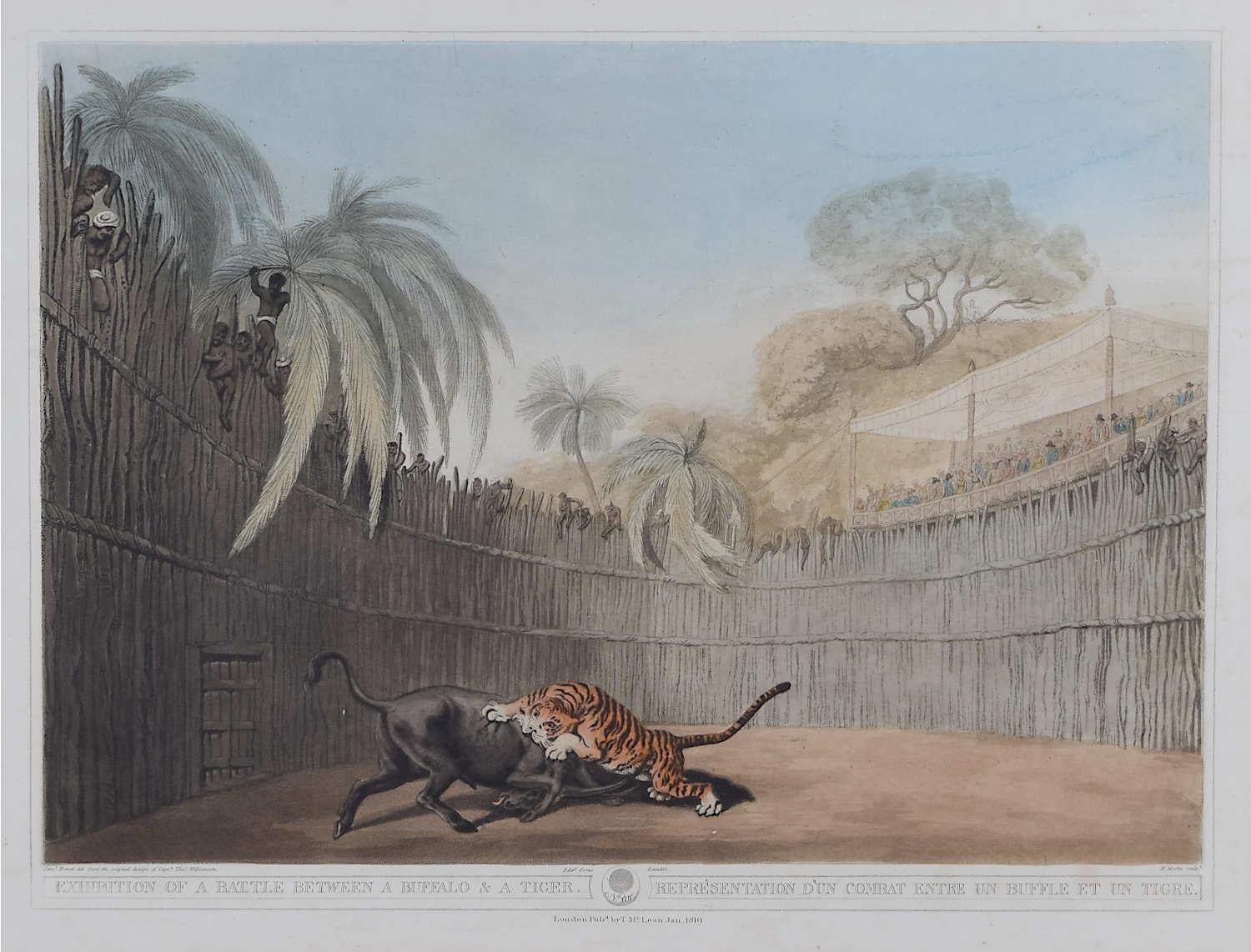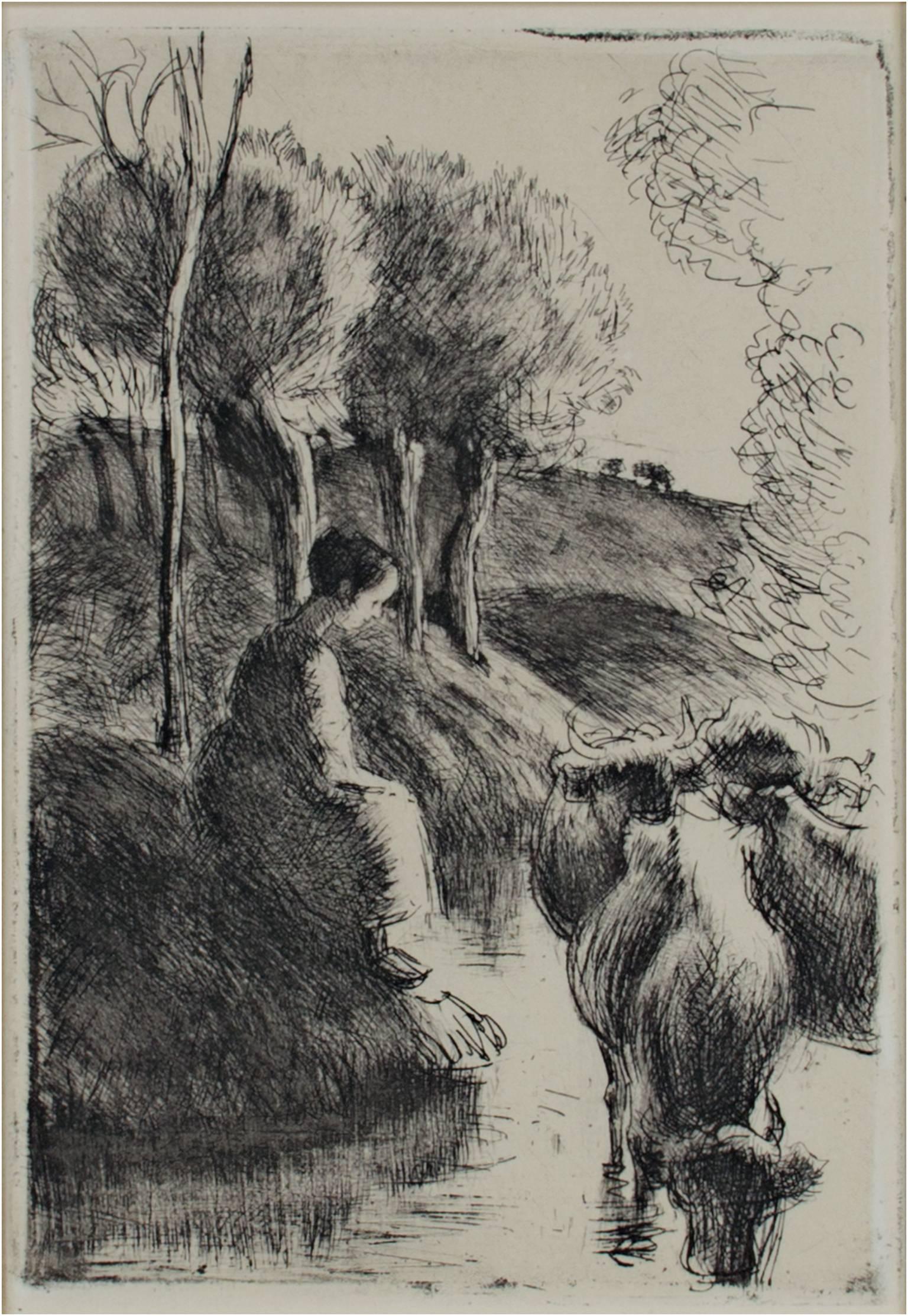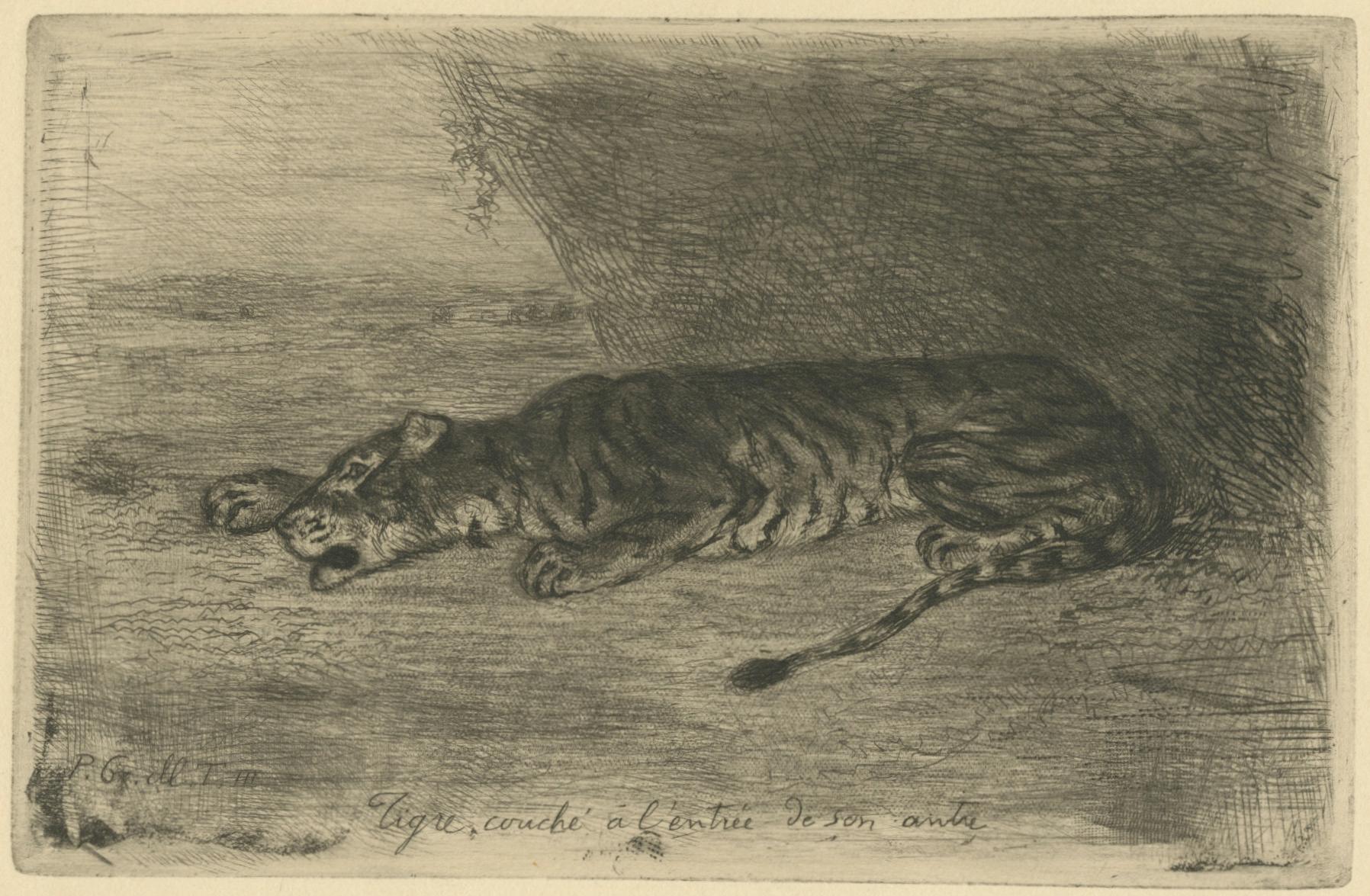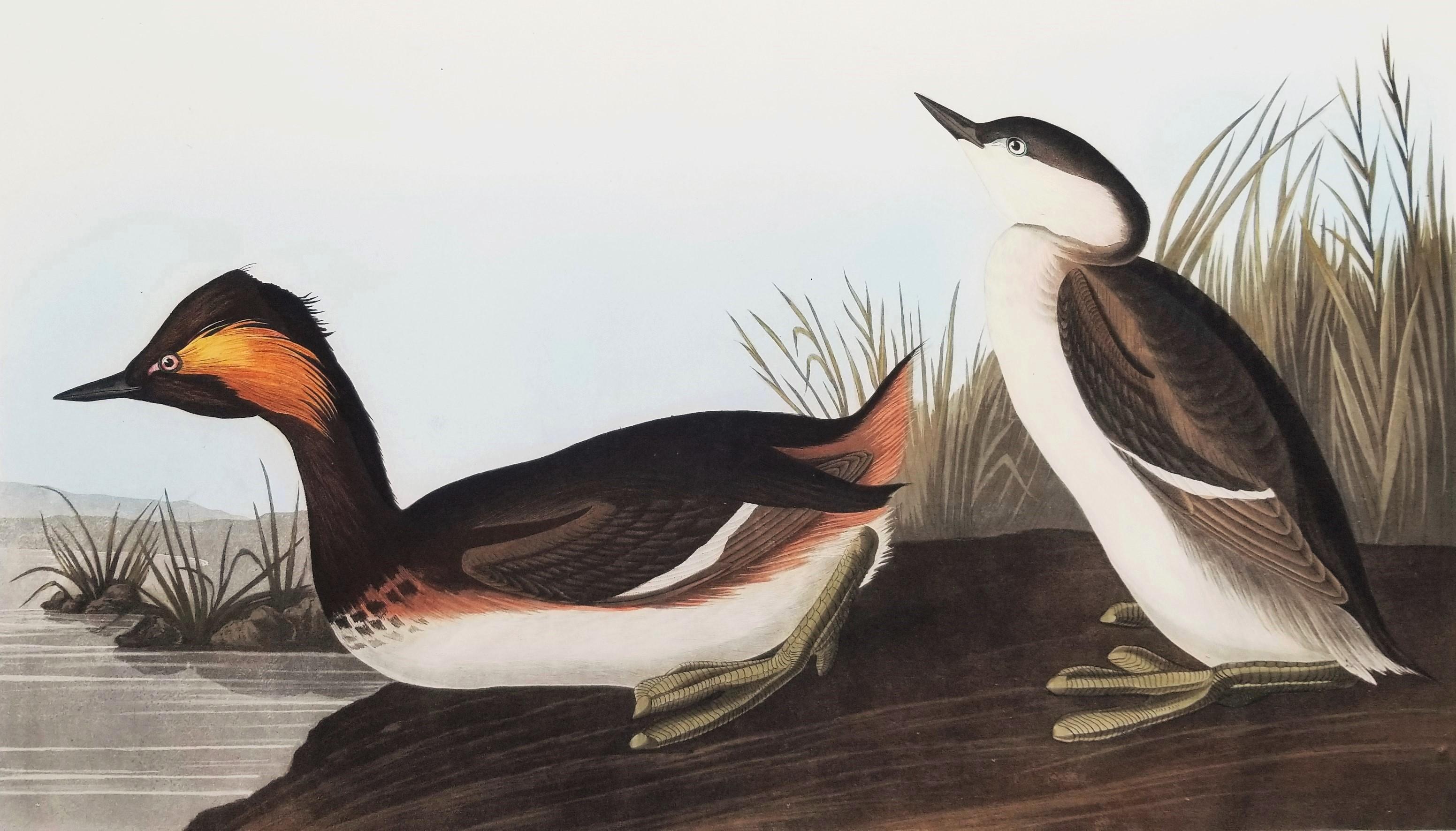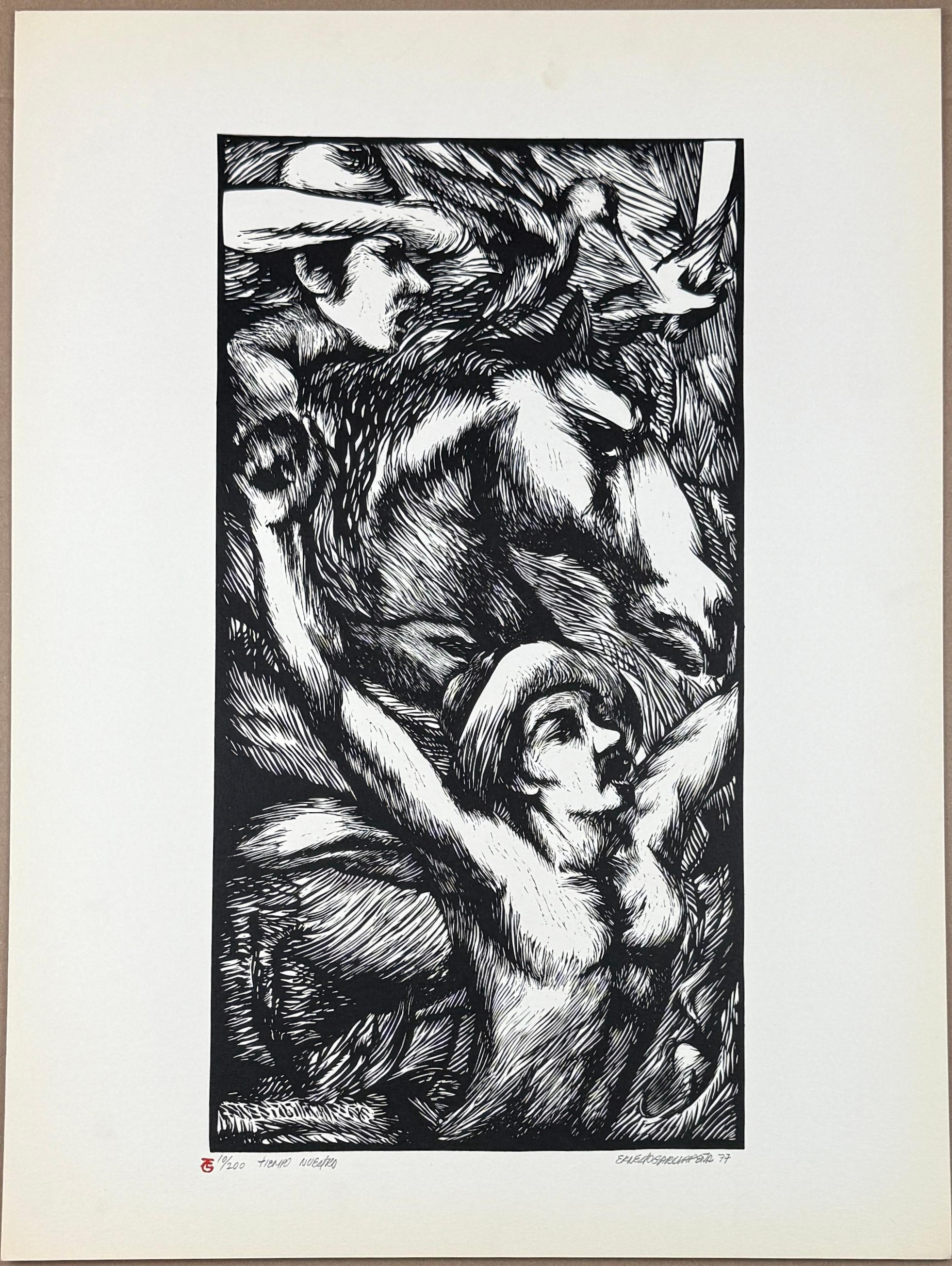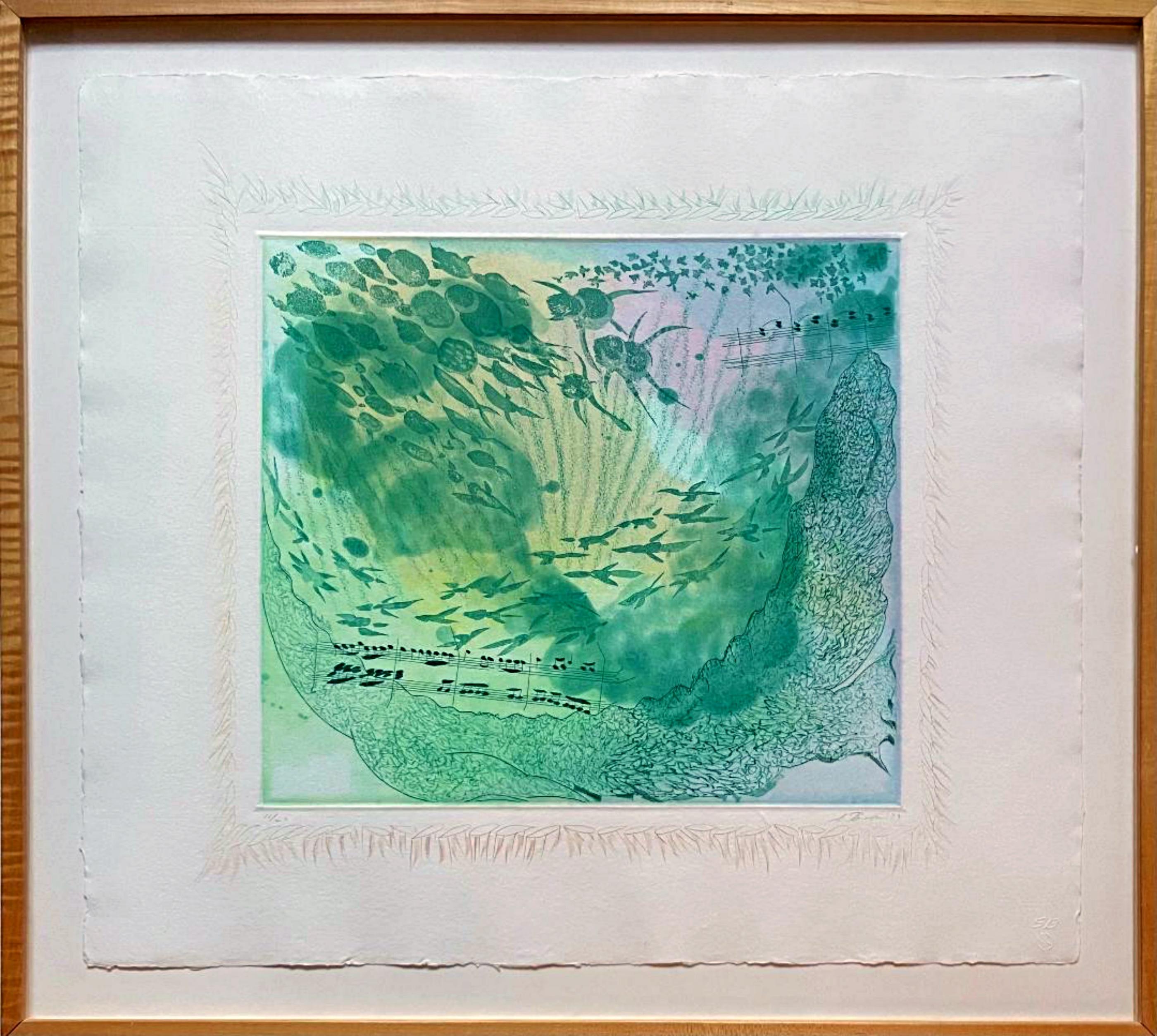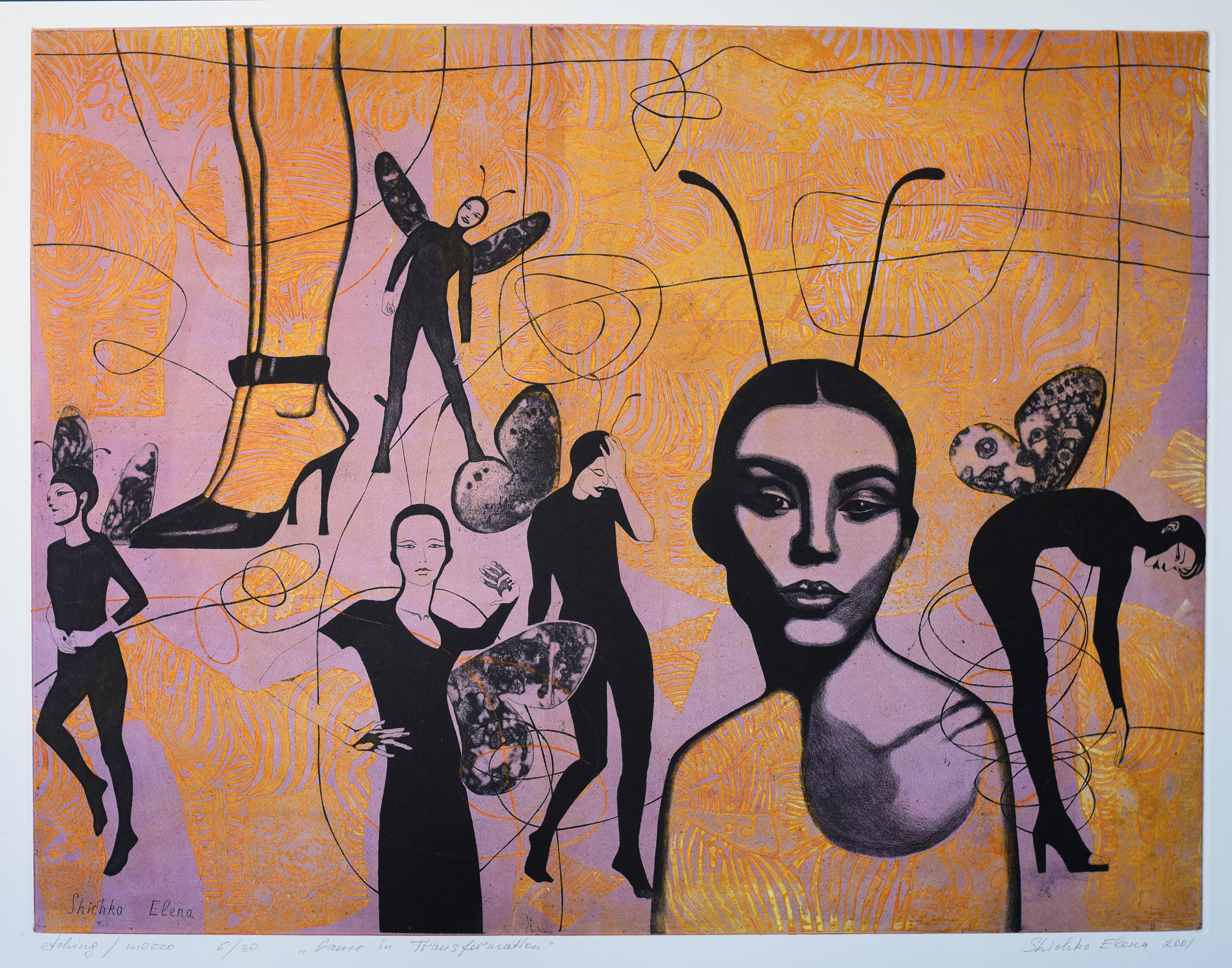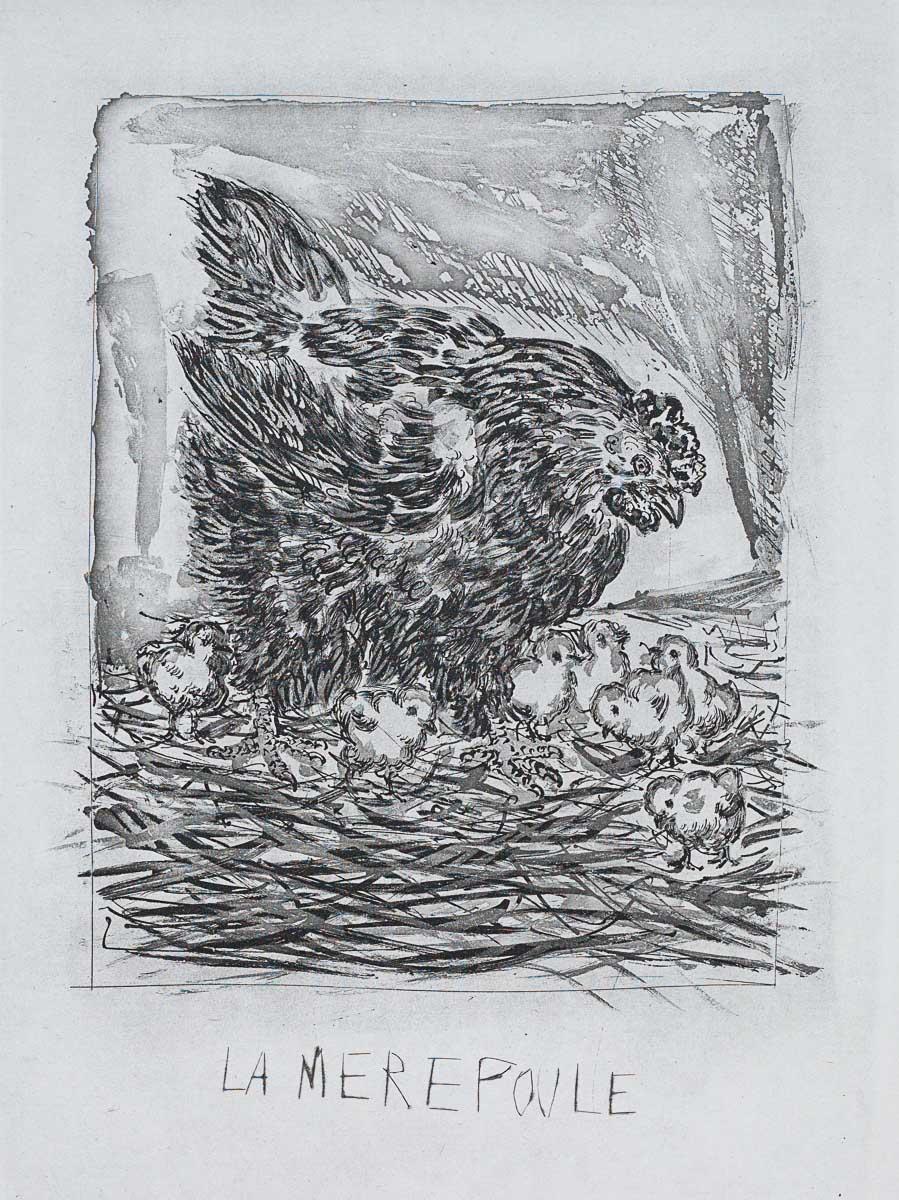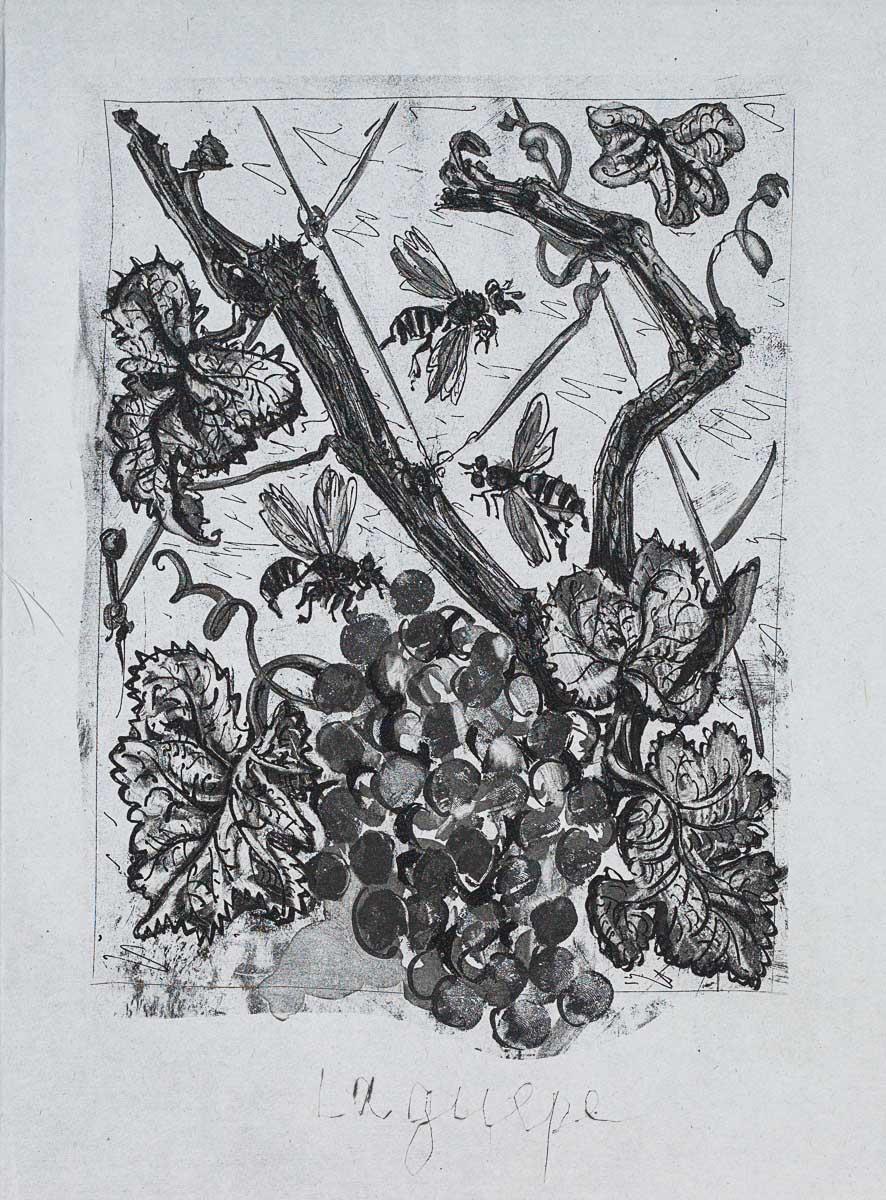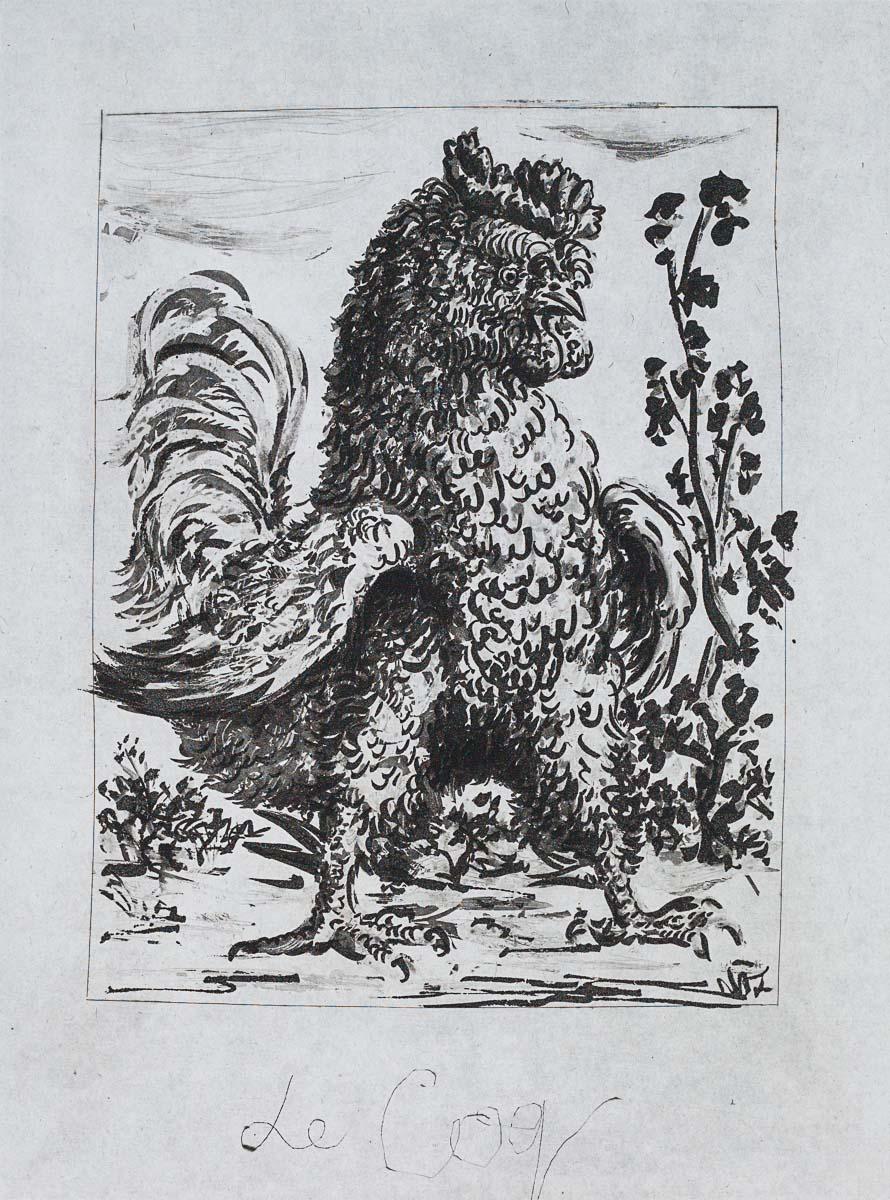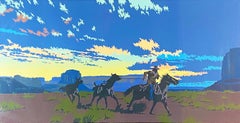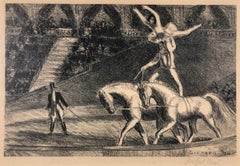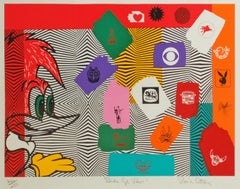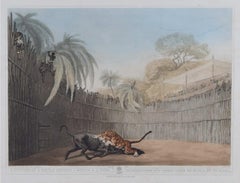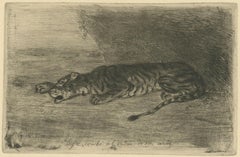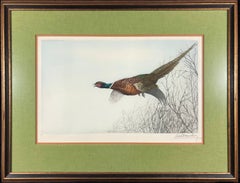
Pheasant in Flight
View Similar Items
Want more images or videos?
Request additional images or videos from the seller
1 of 3
Leon DanchinPheasant in Flight1930s
1930s
$1,250List Price
About the Item
- Creator:Leon Danchin (1887 - 1938, French)
- Creation Year:1930s
- Dimensions:Height: 26 in (66.04 cm)Width: 34.5 in (87.63 cm)
- Medium:
- Movement & Style:
- Period:
- Condition:Please email or call if you have any questions or need more detailed images.
- Gallery Location:Missouri, MO
- Reference Number:1stDibs: LU74732243833
About the Seller
5.0
Vetted Professional Seller
Every seller passes strict standards for authenticity and reliability
Established in 1970
1stDibs seller since 2017
154 sales on 1stDibs
Typical response time: 11 hours
Authenticity Guarantee
In the unlikely event there’s an issue with an item’s authenticity, contact us within 1 year for a full refund. DetailsMoney-Back Guarantee
If your item is not as described, is damaged in transit, or does not arrive, contact us within 7 days for a full refund. Details24-Hour Cancellation
You have a 24-hour grace period in which to reconsider your purchase, with no questions asked.Vetted Professional Sellers
Our world-class sellers must adhere to strict standards for service and quality, maintaining the integrity of our listings.Price-Match Guarantee
If you find that a seller listed the same item for a lower price elsewhere, we’ll match it.Trusted Global Delivery
Our best-in-class carrier network provides specialized shipping options worldwide, including custom delivery.More From This Seller
View AllLe Christ a l'Horloge, Paris
By Marc Chagall
Located in Missouri, MO
Marc Chagall
"Le Christ a l'Horloge, Paris" (Christ in the Clock) 1957 (M. 196)
Color Lithograph on Arches Wove Paper
Signed in Pencil "Marc Chagall" Lower Right
Initialed "H.C." (Hors Commerce) Lower Left, aside from numbered edition of 90
*Floated in Gold Frame with Linen Matting, UV Plexiglass
Sheet Size: 18 3/4 x 14 3/4 inches (47.5 cm x 38 cm)
Image Size: 9 3/4 x 8 1/2 inches
Framed Size: 28.5 x 24.25 inches
Marc Chagall was a man of keen intelligence, a shrewd observer of the contemporary scene, with a great sympathy for human suffering. He was born on July 7, 1887 in Vitebsk, Russia; his original name was Moishe Shagal (Segal), but when he became a foremost member of the Ecole de Paris, he adopted French citizenship and the French spelling of his name. Vitebsk was a good-sized Russian town of over 60,000, not a shtetl. His father supported a wife and eight children as a worker in a herring-pickling plant.
Sheltered by the Jewish commandment against graven images, the young Chagall never saw so much as a drawing until, one day, he watched a schoolmate copying a magazine illustration. He was ridiculed for his astonishment, but he began copying and improvising from magazines. Both Chagall's parents reluctantly agreed to let him study with Yehuda Pen, a Jewish artist in Vitebsk. Later, in 1906, they allowed their son to study in St. Petersburg, where he was exposed to Russian Iconography and folk art. At that time, Jews could leave the Pale only for business and employment and were required to carry a permit. Chagall, who was in St. Petersburg without a permit, was imprisoned briefly.
His first wife, Bella Rosenfeld, was a product of a rich cultivated and intellectual group of Jews in Vitebsk. Chagall was made commissar for the arts for the area, charged with directing its cultural life and establishing an art school. Russian folklore, peasant life and landscapes persisted in his work all his life. In 1910 a rich patron, a lawyer named Vinaver, staked him to a crucial trip to Paris, where young artists were revolutionizing art. He also sent him a handsome allowance of 125 francs (in those days about $24) each month. Chagall rejected cubism, fauvism and futurism, but remained in Paris. He found a studio near Montparnasse in a famous twelve-sided wooden structure divided into wedge-shaped rooms. Chaim Soutine, a fellow Russian Jew, and Modigliani lived on the same floor. To Chagall's astonishment, he found himself heralded as one of the fathers of surrealism. In 1923, a delegation of Max Ernst, Paul Eluard and Gala (later Salvador Dali's wife) actually knelt before Chagall, begging him to join their ranks. He refused.
To understand Chagall's work, it is necessary to know that he was born a Hasidic Jew, heir to mysticism and a world of the spirit, steeped in Jewish lore and reared in the Yiddish language. The Hasidim had a special feeling for animals, which they tried not to overburden. In the mysterious world of Kabbala and fantastic ancient legends of Chagall's youth, the imaginary was as important as the real. His extraordinary use of color also grew out of his dream world; he did not use color realistically, but for emotional effect and to serve the needs of his design. Most of his favorite themes, though superficially light and trivial, mask dark and somber thoughts. The circus he views as a mirror of life; the crucifixion as a tragic theme, used as a parallel to the historic Jewish condition, but he is perhaps best known for the rapturous lovers he painted all his life. His love of music is a theme that runs through his paintings.
After a brief period in Berlin, Chagall, Bella and their young daughter, Ida, moved to Paris and in 1937 they assumed French citizenship. When France fell, Chagall accepted an invitation from the Museum of Modern Art to immigrate to the United States. He was arrested and imprisoned in Marseilles for a short time, but was still able to immigrate with his family. The Nazi onslaught caught Chagall in Vichy, France, preoccupied with his work. He was loath to leave; his friend Varian Fry rescued him from a police roundup of Jews in Marseille, and packed him, his family and 3500 lbs. of his art works on board a transatlantic ship. The day before he arrived in New York City, June 23, 1941, the Nazis attacked Russia. The United States provided a wartime haven and a climate of liberty for Chagall. In America he spent the war years designing large backdrops for the Ballet.
Bella died suddenly in the United States of a viral infection in September 1944 while summering in upstate New York. He rushed her to a hospital in the Adirondacks, where, hampered by his fragmentary English, they were turned away with the excuse that the hour was too late. The next day she died.
He waited for three years after the war before returning to France. With him went a slender married English girl, Virginia Haggard MacNeil; Chagall fell in love with her and they had a son, David. After seven years she ran off with an indigent photographer. It was an immense blow to Chagall's ego, but soon after, he met Valentine Brodsky, a Russian divorcee designing millinery in London (he called her Fava). She cared for him during the days of his immense fame and glory. They returned to France, to a home and studio in rustic Vence. Chagall loved the country and every day walked through the orchards, terraces, etc. before he went to work.
Chagall died on March 28, 1985 in the south of France. His heirs negotiated an arrangement with the French state allowing them to pay most of their inheritance taxes in works of art. The heirs owed about $30 million to the French government; roughly $23 million of that amount was deemed payable in artworks. Chagall's daughter, Ida and his widow approved the arrangement.
Written and submitted by Jean Ershler Schatz, artist and researcher from Laguna Woods, California.
Sources:
Hannah Grad Goodman in Homage to Chagall in Hadassah Magazine, June 1985
Jack Kroll in Newsweek, April 8, 1985
Andrea Jolles in National Jewish Monthly Magazine, May 1985
Michael Gibson...
Category
1950s Modern Figurative Prints
Materials
Lithograph
Price Upon Request
Hurry Sundown
By Billy Schenck
Located in Missouri, MO
Billy Schenck (American, b. 1947)
Hurry Sundown, 1985
Edition 19/60
Serigraph
21 x 38 inches
Signed, Titled, Dated, and Numbered Lower Margin
Billy Schenck is a contemporary artist ...
Category
1980s Pop Art Landscape Prints
Materials
Screen
Price Upon Request
Bareback Act, Old Hippodrome
By Gifford Beal
Located in Missouri, MO
Bareback Act, Old Hippodrome
By Gifford Beal (1879-1956)
Signed Lower Right
Unframed: 6.5" x 9.5"
Framed: 17.5" x 20"
Gifford Beal, painter, etcher, muralist, and teacher, was born in New York City in 1879. The son of landscape painter William Reynolds Beal, Gifford Beal began studying at William Merritt Chase's Shinnecock School of Art (the first established school of plein air painting in America) at the age of thirteen, when he accompanied his older brother, Reynolds, to summer classes. He remained a pupil of Chase's for ten years also studying with him in New York City at the artist's private studio in the Tenth Street Studio Building. Later at his father's behest, he attended Princeton University from 1896 to 1900 while still continuing his lessons with Chase. Upon graduation from Princeton he took classes at the Art Students' League, studying with impressionist landscape painter Henry Ward Ranger and Boston academic painter Frank Vincent DuMond. He ended up as President of the Art Students League for fourteen years, "a distinction unsurpassed by any other artist."
His student days were spent entirely in this country. "Given the opportunity to visit Paris en route to England in 1908, he chose to avoid it" he stated, "I didn't trust myself with the delightful life in ParisIt all sounded so fascinating and easy and loose." His subjects were predominately American, and it has been said stylistically "his art is completely American." Gifford achieved early recognition in the New York Art World.
He became an associate member of the National Academy of Design in 1908 and was elected to full status of academician in 1914. He was known for garden parties, circuses, landscapes, streets, coasts, flowers and marines. This diversity in subject matter created "no typical or characteristic style to his work."
Beal's style was highly influenced by Chase and Childe Hassam, a long time friend of the Beal family who used to travel "about the countryside with Beal in a car sketching...
Category
20th Century American Modern Animal Prints
Materials
Lithograph
Price Upon Request
Bird's Eye View
By Ronnie Cutrone
Located in Missouri, MO
Ronnie Cutrone (1948-2013)
"Bird's Eye View" c. 1980s
Color Lithograph
Ed. 222/250
Signed, Numbered and Titled
Image Size: 17 x 23.5 inches
Framed Size: approx. 24 x 30 inches.
Ronnie Cutrone, a figurehead of the Pop and Post-Pop art scenes, was Andy Warhol's assistant at the Factory atop the Decker Building from 1972-1980, and worked closely with Roy Lichtenstein, combining stylistic elements of both. Cutrone's large-scale paintings of American cartoon icons, like Mickey Mouse, Felix the Cat, and Woody Woodpecker further reinvented kitsch and popular media in terms of fine art.
Executed in fluorescent monochromatic colors with the finesse of mass-produced silkscreen and prints, Cutrone's works are the reverse of tromp-l'oeil; they use fine art media (watercolor, pastel, crayon - on high-quality paper) to celebrate, rather than hide, the artifice of their subjects. "Everything is cartoon for me", Cutrone is noted for saying, even "ancient manuscripts...
Category
Late 20th Century Pop Art Figurative Prints
Materials
Lithograph
Price Upon Request
American Eagle (Nest Builder III)
By Ted Blaylock
Located in Missouri, MO
Ted Blaylock (b. 1946)
"Nest Builder III" 1986
Print
Ed. 586/950
Signed and Numbered
Ted Blaylock opened his own art studio and gallery in Collinsville, IL in 1969. He eventually mo...
Category
1980s American Realist Animal Prints
Materials
Paper, Lithograph
Price Upon Request
Tree and Dove
Located in Missouri, MO
Tree and Dove
Ferol K. Sibley Warthen (American, 1890-1986)
Color Woodblock Print
Edition of 3
6.25 x 4.75 inches
13 x 11.5 inches with frame
Signed Lower Right
Titled Lower Left
Born 1890, Died 1986...
Category
Mid-20th Century American Modern Animal Prints
Materials
Color
You May Also Like
Samuel Howitt: 'Battle between Buffalo and Tiger' print after Thomas Williamson
By Thomas Williamson
Located in London, GB
Samuel Howitt (1765-1822) after Thomas Williamson (1758-1817)
Exhibition of a Battle between a Buffalo & a Tiger' from Oriental Field Sports (1819)
Hand-coloured aquatint
35 x 47 cm
Captain Thomas...
Category
Early 19th Century Realist Animal Prints
Materials
Aquatint
Black Geese
By Winifred Austen
Located in San Francisco, CA
This artwork titled "Black Geese" 1934 is an original color aquatint by noted British artist Winifred Marie Louise Austen, 1876-1964. It is hand signed and titled in pencil by the artist. The image (plate mark) is 9 x 13.75 inches, sheet size is 10.30 x 16.5 inches. Published by Arthur Greatorax LTD, Grafton street, London. It is in excellent condition.
About the artist:
Born at Ramsgate, Kent on 12 July 1876, Winifred Austen only daughter of Josiah Austin, a Cornish naval surgeon, and his wife Fanny, née Mann. She amended the spelling of her surname from Austin to Austen from the time that she began to exhibit.
In 1892 the family moved to Hornsey, London from where Austin attended the London County Council School of Arts and Crafts, studying under Cuthbert Swan, an animal painter. I n 1899 Austen exhibited a picture of a lion at the Royal Academy and in all exhibited more than seventy pictures at the Academy, the last in 1961.
She worked in both oils and watercolor but Austen is most highly regarded as an etcher. In all she made some two hundred etched plates, beginning in 1906 with a series entitled The White Heron. She had particular feeling for birds and small mammals, and the naturalist Sir Peter...
Category
Mid-20th Century Realist Animal Prints
Materials
Aquatint
19th century black and white etching aquatint outdoors figurative animal print
By Camille Pissarro
Located in Milwaukee, WI
"Vachere au Bord de L'Eau" is an original etching and aquatint by Camille Pissarro, the 8th state. It can be found in the catalogue raisonne Delteil #93. It features a woman sitting ...
Category
1890s Realist Figurative Prints
Materials
Etching, Aquatint
Tigre couché à l'entrée de son antre (Tiger Lying at the Entrance to its Lair)
By Eugène Delacroix
Located in Middletown, NY
Etching, drypoint, and roulette on watermarked Hallines cream laid paper, 3 3/4 x 5 7/8 inches (95 x 148 mm), full margins. A very good impression of this charming image, with all of...
Category
Early 19th Century Realist Animal Prints
Materials
Laid Paper, Drypoint, Etching
Eared Grebe /// John James Audubon Ornithology Havell Edition Bird Animal Art
By John James Audubon
Located in Saint Augustine, FL
Artist: John James Audubon (American, 1785-1851)
Title: "Eared Grebe" (Plate CCCCIV - 404; part No. 81)
Portfolio: The Birds of America, Havell Edition
Year: 1838
Medium: Original Ha...
Category
1830s Victorian Animal Prints
Materials
Watercolor, Engraving, Aquatint, Intaglio
"Our time", 1977 original linocut signed limited edition 24x18in Cuban Latin art
Located in Miami, FL
Ernesto Garcia Peña (Cuba, 1949)
'Our time" (from Porfolio Grabados Cubanos)', 1977
linocut print on paper Canson 320 g.
23.6 x 17.6 in. (59.8 x 44.6 cm.)
Edition of 200
Ref: GAE-309...
Category
1970s Contemporary Animal Prints
Materials
Paper, Engraving, Etching, Aquatint, Screen, Linocut
